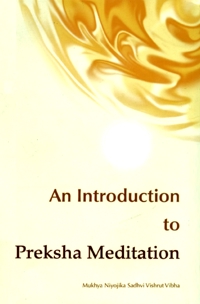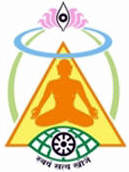
Leshya Dhyan
In every day life, we come across a variety of objects that differ, in colour. We find some colours attractive while others not so attractive. Some colours give us a feeling of calmness, peace, and purity (e.g. white colour of a snow laden peaks), while other makes us experience luxury and prosperity (e.g. the lush green garden), it is believed that colours are one of the most important stimulants that influence our conscious and subconscious minds. Personal preferences of the colours can reveal a lot about a person's physical mental, and emotional attributes.
Leshya, the rays of consciousness and the electro-magnetic wave emanating from the subtle body, constantly flow through our body These influence our Taijas sharir, the electrical body. This is the first stage. In the second stage, the leshya is converted into emotions through the secretions of glands. From here, they move to the next stage and influence our gross body. Here, the leshya converts into emotions.
In other words, leshya is a bridge between the subtle body and the gross body. It is the radiation of our consciousness and electrical body that in turn constitutes our aura. The aura is created by multiple leshyas and can change according to our emotions. The leshya, therefore, helps to replace the impure vibrations of passions with the pure vibrations of consciousness emanating due to purification of passions.
On the basis of the colours, leshya is of six types:
- Krishna (black)
- Neel (blue)
- Kapota (grey)
- Taijas (red)
- Padma (yellow)
- Shukla (white)
Among these, first three leshyas are considered inauspicious while the remaining three are considered auspicious. The auspicious leshyas are bright and illuminating depending on the different proportions of Taijas, Padam, and Shukla leshya. The leshya gives rise to instincts, emotions, and habits. Inauspicious leshya generates evil thoughts and makes a person cruel, violent, or greedy. However, through perception of colours and purification of thoughts, inauspicious leshya can be replaced with auspicious ones. We can succeed in creating a pure and powerful aura and proceed on the path of spiritual journey.
Leshyas are the combination of both the colours and the emotions. The colours possess the ability to influence both the body and the mind.
There are two categories of colours. One category includes bright illuminating colour while the second category has dark, dull, and non-illuminating colours. Red, yellow, and white colours belong to the first category, while black, blue and grey fall into the second category. The level of illumination also depends on the different proportions of these colours in a mixture. Perception of colour is practiced on chaitanya kendra with rhythmic breathing.
All living beings are composed of two elements: a non-material element called consciousness or soul and a material element called physical body. Transcendentally, although the soul is the supreme center, it is unable to act with complete and independent authority because the passions, predominate ordinary living beings. The soul radiates the psychic energy, which interacts with the passions and creates a new field called the adhyavasaya, the primal psychical expression. This psychic energy acts as a mediator between the gross physical body and the soul. Adhyavasaya has different vibrations, which move in different directions. When they reach the level of consciousness they take the form of impulses and urges. These impulses and urges are influenced by colours, which transform into emotions and feelings.
Objectives
Following are the main objectives of perception of the colours:
- Achievement of inner harmony and development of vital energy
- Alleviation of obstacles due to acquisition of wisdom
- Destruction of obstacles in the path of spiritual energy flow
- Elimination of delusions
Technique
In this exercise, we have to use our power of visualization of a particular colour at a particular psychic centre. These again, with the mental projection, we have to visualise the same colour as spreading all around us and permeating the whole aura around us. Finally we have to make use of the technique of auto suggestion to bring about the change in our attitude or emotional pattern. Deep concentration is to be maintained throughout the exercise.
Benefits
The auspicious leshyas balance the colours in the body and promote physical and mental well being. The perception of colours impart following benefits to the practitioner:
(a) Physical
(b) Psychological
- Boosts the immune system and the nervous system
- Influences the endocrine system
- Improves the efficiency of the digestive system
- Purifies the blood
(c) Emotional
- Improves memory power
- Alleviates depression
- Promotes happiness
- Alleviates sleeplessness and tiredness
- Empowers self-esteem and will power
- Gives mental peace and harmony
- Enhances decision-making powers
(d) Spiritual
- Establishes control over emotions
- Reduces violent behaviour
- Purifies our aura
- Develops intuition power
Conclusion
During perception of the colours, we, simultaneously, meditate on different bright colours with specific psychic centers. The technique plays a crucial role in shaping our character by regulating our hormones.
Added Illustrations
Courtesy: Archana Jain
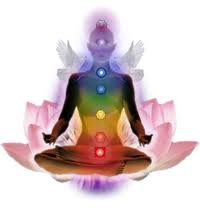
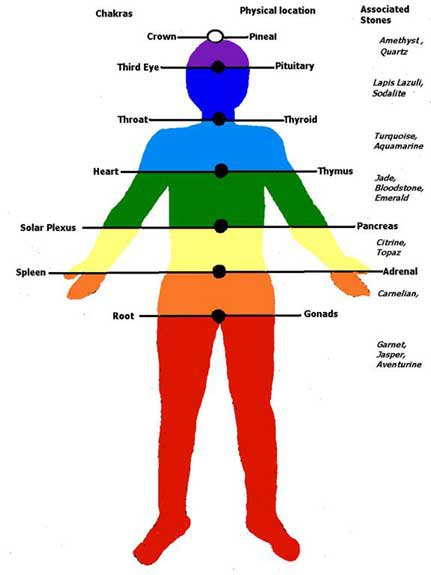
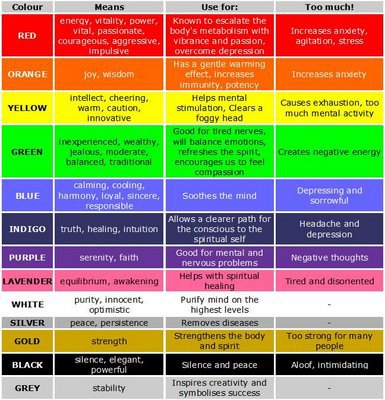
 Sadhvi Vishrut Vibha
Sadhvi Vishrut Vibha
